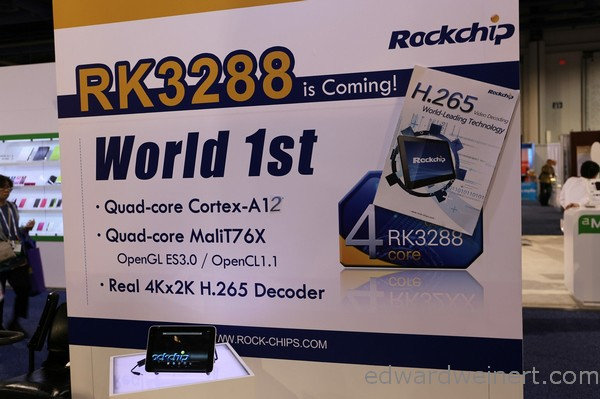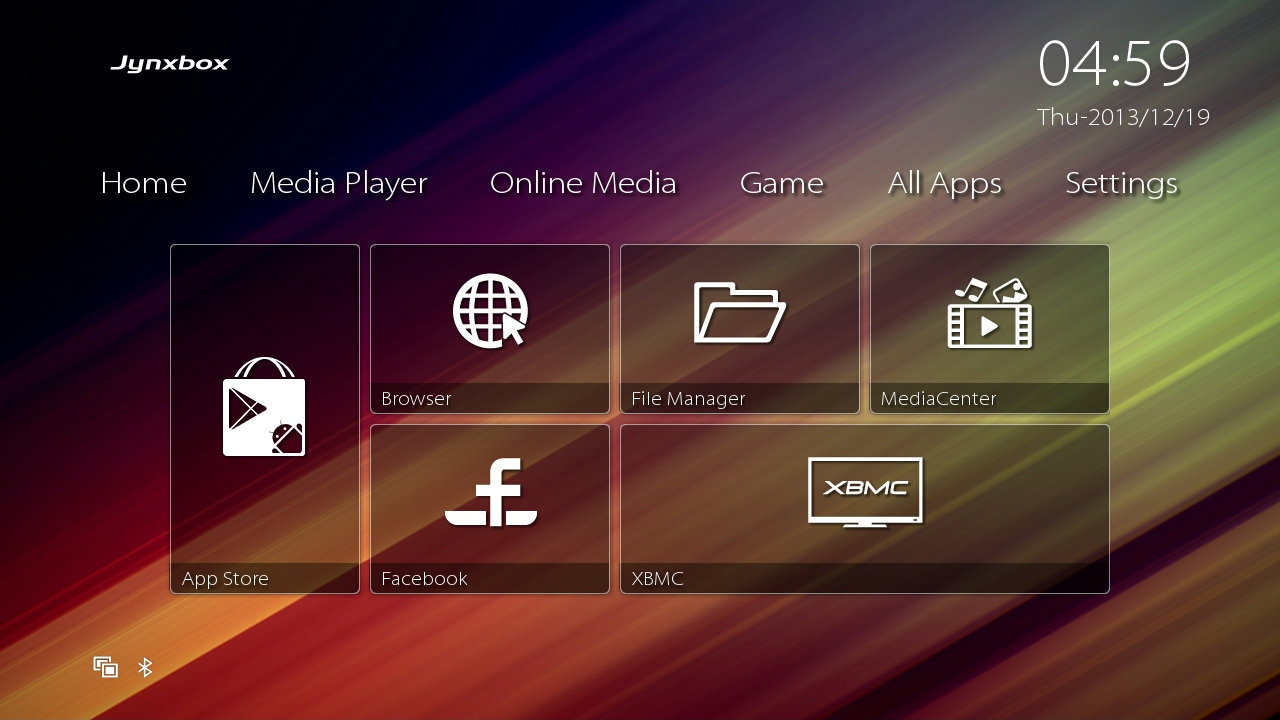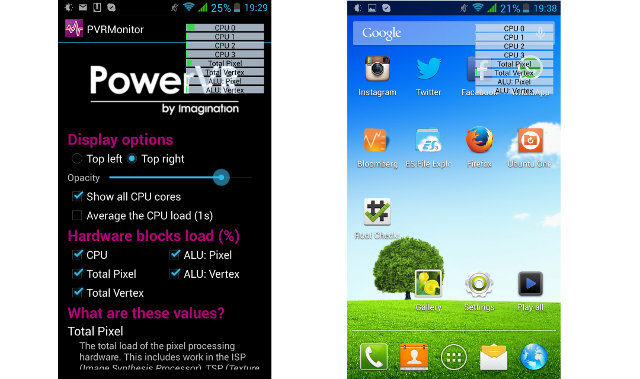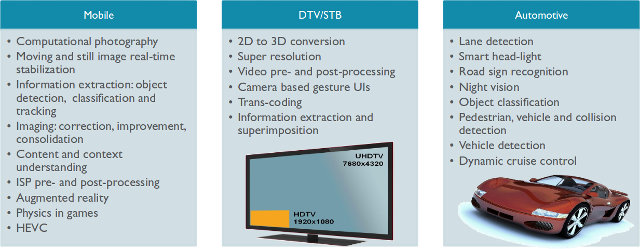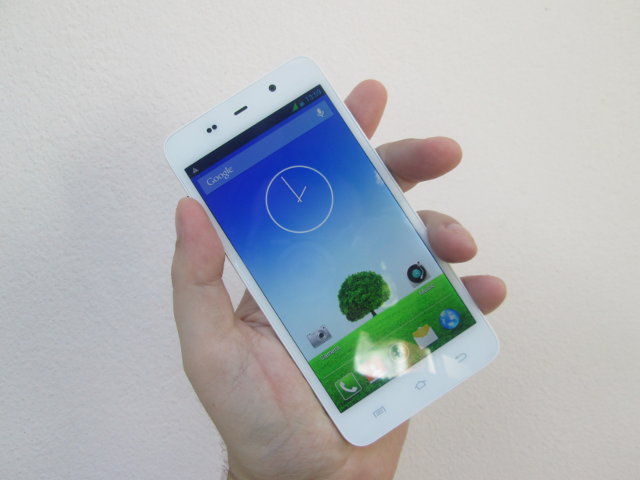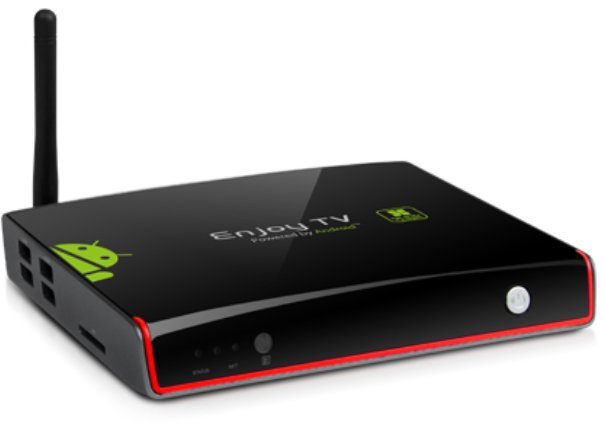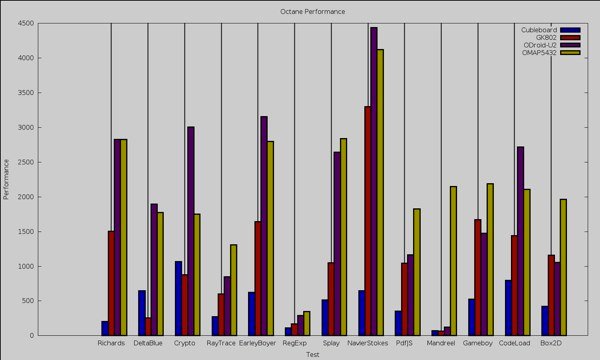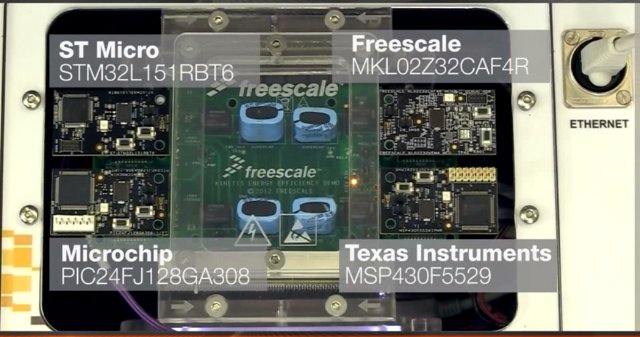We were expecting some new processors at CES 2014, but this CES turned out to be mostly disappointing, and the vast majority of reporters present at the conference, do not seem interested in covering Chinese SoC vendors. Some information however surfaced on several foreign languages blogs and news sites about Rockchip RK3288. First, RK3288 is indeed based on ARM Cortex A12 as initially announced, and not some mysterious ARM Cortex A17 cores, but somebody at Rockchip likely made an embarrassing mistake, and Edward Weinert reported it was corrected at Rockchip booth with pieces of paper as shown below. So Rockchip RK3288 has four of these Cortex A12 core, a 4L2K H.265 / HEVC video decoder, and an high-end Mali T764 T624 GPU supporting OpenGL ES3.0 and OpenCL 1.1 that vastly outperforms Mali-400 MP4 found in RK3188, and is even significantly faster than Adreno 330 GPU found in Qualcomm Snapdragon 800 […]
Jynxbox M6 Android TV Box Review
I’ve shown some unboxing pictures and video of Jynxbox Android M6 earlier this week, and today I’ll write a review of this AMLogic AML8726-M6 dual core Android media player. I’ll start with my first impressions, go through the different settings, test video playback, wi-fi performance, and reports about different miscalleous tests: Bluetooth, USB mass storage, USB webcam, etc… First Boot, Settings and First Impressions First, you’ll need to insert the provided AAA batteries in to the remote control. Opening the remote is a bit tricker than I would like as the cover does not come off that easily. Before powering up the device, I’ve connected the provided HDMI cable between the device and my HDTV, and an Ethernet cable to my hub. The first Ethernet cable would not click with in the device RJ45 connector, although it works with my laptop and other devices, but using another one worked just fine. Connecting […]
PVRMonitor Displays real-time CPU and GPU performance for PowerVR enabled Android Devices
Imagination Technologies has some advanced tools such as PowerVRTune in their Powervr Graphics SDK, but they’ve now released a simple tool called PVRMonitor to display real-time CPU and GPU usage for Android devices featuring PowerVR GPUs. In some firmware, Android’s Developer Settings have options to enable CPU and GPU usage, but in my phone for example, this is not available, so this app may be handy to check whether your system or app is taking too many resources. Inside the application, you can select the overlay position, whether to show all CPU cores with CPU load averaged over 200ms, or over one second. You can select five hardware blocks to display: CPU Total Pixel – Load in percent of the pixel processing hardware including texturing, raster operation and fragment shader processing. If nothing is modified on the screen it should be zero, and if it is too high during games […]
Practical Applications and Benchmarks of GPU Computing via RenderScript and OpenCL with ARM Mali-T6XX GPU
Since the announcement of ARM Mali-T604 in 2010, ARM has explained that GPGPU (General Purpose computing on GPU), aka GPU Compute, would be one of the key features of their new Mali graphics processor, and the company now expects GPGPU to become mainstream in embedded and mobile devices in 2014 and beyond. I’ve just come across a presentation by Roberto Mijat, technical marketing manager at ARM, entitled “Unleashing the benefits of GPU Computing with ARM Mali” which shows practical applications and use cases where the use of RenderScript, or OpenCL can make massive performance improvements, at much lower power consumption, over the same parallel tasks processed by the CPU only. Let’s have a look at some of the most interesting slides. GPU compute can be used for multiple applications in mobile, multimedia, and automotive sectors. GPU Compute for H.265 / HEVC HEVC aka H.265 is the next generation codec providing […]
ThL W200 Smartphone Review (Mediatek MT6589T)
I’ve received ThL W200, a smartphone powered by Mediatek MT6589T SoC, at the beginning of week (Check specs and unboxing pictures), and after about a week of use, it’s time for a review. First I’ll go through my first impressions, test of different features such as the camera, GPS, and Bluetooth, and finally run some apps to get system information and benchmarks for this phone. ThL W200 Review This smartphone feels very light, but the build quality is good, and as explained in my unboxing post, comes with power, volume -/+, and menu/home/back buttons. You’ll also find rear camera + flash, front camera, the light sensor, and the notification light. First impressions The phone boots to the standard Android home screen, as shown above, with English as the default language, and comes with Google Play Store, and no Chinese apps. The 720p screen provide a sharp and clear display, and […]
Geniatech ATV1800 Android TV Box To Feature AMLogic Quad Core Processor & Android 4.3
A few months ago, we learned AMLogic was working on a Quad core Cortex A9 SoC with the new ARM Mali-450MP6 (8 cores) GPU called AML8726-M8. It turns out AML8726-M8 may not only be one processor, but a family of processors (M801, M802, M803, and M805) according to a recent article in Chinese. This SoC was going to be part of Geniatech ATV1800 Android STB, but specifications were not available. More details have now surfaced. Geniatech (aka Mygica) ATV1800 Enjoy TV Specifications: SoC – AMLogic M801 or M802 Quad core Cortex A9 @ 1.6 to 2.0 GHz + ARM Mali-450MP6 GPU System Memory – 2GB DDR3 Storage – 8GB NAND + microSD card slot Video Output – HDMI 1.4 up to 1080p, and composite Audio Output – HDMI, Stereo RCA output, and optical SPDIF (TBC) Connectivity – 10/100M Ethernet, built-in 802.11 b/g/n WiFi, and Bluetooth USB – 4 USB 2.0 […]
Texas Instruments OMAP5432 EVM Benchmarked Against ODROID-U2, BeagleBone Black, GK802… and an Intel Core i7-2600K based PC
Texas instruments and SVTronics announced an OMAP5 evaluation board a couple of months ago. The board features OMAP5432 dual Cortex A15, dual Cortex M4 SoC, 2GB RAM, a 4GB eMMC module, USB 3.0, SATA and more. SVTronics sent a board to Linux.com, where they wrote a short review, followed by an article benchmarking the OMAP5 EVM against AllWinner A10, Freescale i.MX6, Exynos 4412 Prime, and TI Sitara platforms, namely Cubieboard, GK802, ODROID-U2, and BeagleBone Black, all running Linux. Ben Martin, the writer, also benchmarked the board against a Linux PC powered by an Intel Core i7-2600K processor (4 cores, 8 thread, clocked at 3.4GHz, with a turbo frequency up to 3.8GHz). The board used was an early version, clocked at 800MHz, and later in September, all boards will be clocked at 1.5Ghz, so for benchmarks that stress the CPU, you could expect almost double the performance. With that in mind, […]
MCU Energy Efficiency Benchmark – Freescale KL02, Microchip PIC24, TI MSP430, and STMicro STM32L
Freescale has recently uploaded a video comparison the energy efficiency of several micro-controllers: Freescale Kinetis KL02, Texas Instruments MSP430, STMicro STM32L, and Microchip PIC24. Since it’s a Freescale video, we already know the winner, but the test they performed it still interesting, and it shows drastic performance differences between architectures. The used the following exact MCU for testing: Freescale MKL02Z32CAF4R – Cortex M0+ @ 48 MHz STMicro STM32L151RBT6 – Cortex M3 @ 32 MHz Microchip PIC24FJ128GA308 – 16-bit MCU @ 32 MHz Texas Instruments MSP430F5529 – 16-bit MCU @ 25 MHz Freescale did not really select tough competition such as NXP LPC800 Cortex M0+, but instead a Cortex M3 MCU, and older 16-bit MCUs. I don’t know if Microchip has a new generation of ultra low power 16-bit MCUs , but Texas Instruments, for example, launched MSP430 Wolverine MCUs at the end of last year. So this comparison may not be […]


